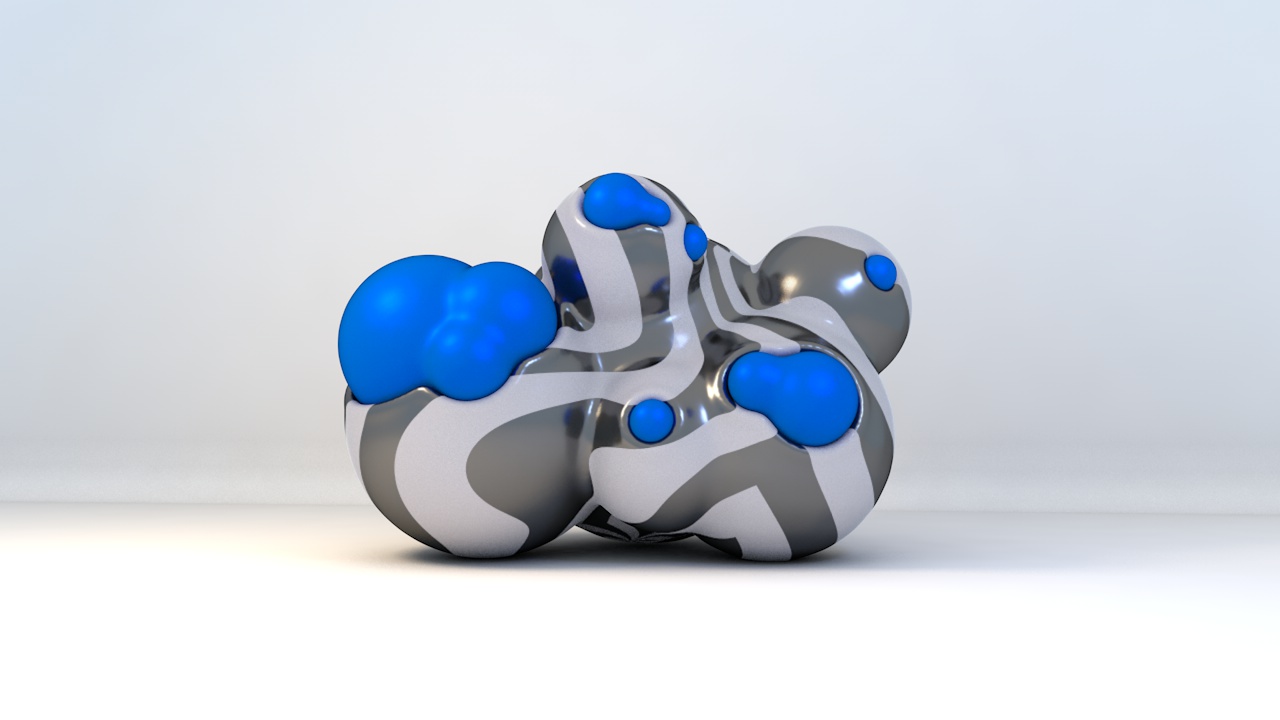-
Posts
2,052 -
Joined
-
Last visited
-
Days Won
119
Content Type
Profiles
Blogs
Forums
Gallery
Pipeline Tools
3D Wiki
Plugin List
Store
Downloads
Everything posted by HappyPolygon
-

Thread for reporting/resolving issues with C4D S26
HappyPolygon replied to HappyPolygon's topic in Discussions
-

Thread for reporting/resolving issues with C4D S26
HappyPolygon replied to HappyPolygon's topic in Discussions
I would like to note that using a Align to Spline tag to align objects on SceneNode capsule Splines (like the segment) now works on S26. -
Use the Hair Collider Tag on your Sphere or any other object you want hair to collide with. And make sure the Hair object has enabled Dynamics and Forces. Keep your Guides number, Guide Subdivisions and polygon surfaces low for faster simulations. There's also the Hair to Hair collision option but it will greatly slow the simulation, use with caution.
-
Foundry has released Modo 16.0, the latest version of its 3D modelling and rendering software. The release – the first of two in the Modo 16 Series – adds a new Conditional Loop tool for smarter edge loop selection, and updates existing features throughout Modo’s 3D modelling toolsets. Other changes include a new Wrap Effector; display of blend modes in Modo’s Shader Tree; background baking of procedural textures; and a new Conditional Commands system for automating repetitive tasks. NPR 2 kit now free to users with active licences Outside the software itself, the NPR 2 kit is now available free to users with active licences of Modo 16. The set of tools for non-photorealistic rendering, originally released in 2015, previously cost $199. Pricing and availability Modo 16.0 is available for 64-bit Windows 10+, RHEL/CentOS 7.6+ and Ubuntu 20.04 Linux, and macOS 10.15+. Subscriptions cost $68/month or $689/year, up $3/month or $30/year since the previous release.
-
I mailed him and he responded. He used keyframes. Some time I'll try doing it using dynamics or with the Axis node.
-
I think RedShift does support this now but I'm not sure it supports the volumetric effect. I had asked this last year. Can't find it unfortunately. You can certainly fake it in vanilla C4D using 3 (RGB) volumetric lights. But it's not suitable for animation (moving the lights around) Correct blending, wrong physics Untitled 1.c4d Correct physics, wrong blending Untitled 2.c4d
-

Maxon's Spring 2022 Launch Event | Live Stream | S26 Announcement
HappyPolygon replied to HappyPolygon's topic in News
Well, that explains it... And somehow reminded me of this comic strip -
I remember a cool old app called Genetica, I wish C4D had more material nodes like those.
-

Maxon's Spring 2022 Launch Event | Live Stream | S26 Announcement
HappyPolygon replied to HappyPolygon's topic in News
It took me two days to figure out how that (TL:DR the first time) was actually addressing my question 🤣. Usually without "quotes" and getting a notification I pass things for "just some people talking with each other". I did consider all what you have analyzed. That's why I mentioned "experienced developers". But it was my fault for not describing my thought of leasing better. When I was thinking about this. I was talking about hiring companies and freelancers (like you) that have already worked with MAXON or have developed their own plugins in the past. In this context the code will be more closer to the standards of MAXON like if it were developed by them in the first place. In my (very innocent) imagination it was going somewhat like this: "MAXON - Hey, XXXX (former employee) how's it going ? We are trying to assemble a small team to develop a bunch of small additions to the next C4D release and we'd like to have you on board on this for the next 5 months. Our main team is very occupied with the "next big guns" and resolving issues with the previous release features but we also want to sprinkle some small new stuff here and there. If you are in or have someone else to recommend let as know. The requirements and payment are attached to a pdf. Yours MAXON". "The features we need for our next release are the following: 1- An enhancement of the "Fit to Circle". We want a "Fit to any spline" functionality. This is a Deformer object. It takes a Spline, projects it on a geometry and attracts neighboring points close to it. 2 - Sphere Slice, Caps and Fillet. Hemisphere topology style. We want a Slice option for the Sphere primitive with the option of XYZ Axis for the orientation of the Slice. An option for Caps once the slice is active and an option for Fillet. The Hemisphere type is now obsolete. This upgrade resolves the no-cap procedural Hemisphere, and maintains the topology type (Tetra, Hexa, Octa ...) 3 - A Plugin Manager upgrade showing Loading Time, Type, Initialization, Compatibly Check. And some management capabilities. The Initialization option allows the user to disable/enable the loading of the plugin. (to make C4D load faster) The Compatibility is just an indicator. It shows that the plugin was parsed but could not execute. The Type is a MetaData we are planning to implement for other devs to use. It denotes the use of the plugin like Animation, Modeling, Texturing etc... As a Manager we want the user to have the ability to create Folder Categories that will appear as Sub-menus in the Extensions menu. The Submenus are located on the left of the Manager, the User just drags n' drops from the main list to the submenus. The Manager also allows to delete Plugins (sends them to the Recycle Bin). The image below depicts how the project should look like... (Ignore the Plugin Converter, that will never happen). Although only python plugins are depicted we need also .xdl64 to be recognized. " OK that sphere thing is probably useless because SceneNodes can do it, and that "Fit to Spline" is probably unnecessary... But you get the point. Short-term hiring, small projects, some devs may need that kind of occupation, more features for the next release. My interpretation of a "win-win" situation. UNLESS, writing code for incorporation inside C4D is very different from writing code for a Plug-in. Well in that I take that back. I thought writing anything outside the "core" was just invoking of classes and methods and doing things with those no matter the environment. -
Adobe has unveiled Substance 3D Designer 12.1, the latest version of its material-authoring software, introducing support for importing and exporting 3D assets in USD format. The update also adds tools throughout the Substance material graph, including a new toolset for generating 3D textures, and new 2D and 3D noises; plus a draped fabric mesh for 3D previews of cloth materials. https://substance3d.adobe.com/documentation/sddoc/version-12-1-225972219.html
-

Maxon's Spring 2022 Launch Event | Live Stream | S26 Announcement
HappyPolygon replied to HappyPolygon's topic in News
I wonder if it is common practice for big DCC companies to "borough" developers from other smaller firms to develop features. I know this is very common for general IT companies. Take for example Rocket Lasso's team developing Capsules for Maxon. I think it's kinda more of a win-win situation. Maxon hires company with experienced developers for X feature for Y time, pays them for RnD, and compensates with a funding for 2-3 years after the feature has been released (bugs and profits from the feature). Next time Maxon wants to update/expand that feature rehires them. This way more plugins become part of C4D, C4D gets more competitive, more people buy it and C4D keeps the price constant. -
Are you sure you are in point mode ?
-
This is an old question. What version do you use ?
-

Maxon's Spring 2022 Launch Event | Live Stream | S26 Announcement
HappyPolygon replied to HappyPolygon's topic in News
-
When using C4D with an idea already in mind and the idea doesn't seem to be directly applicable, try to abstract the idea and "masquerade" the effect. Make it look the way you want it but using other tricks. Fake it. You use a Light object but make it a child of a Field. Make the Field control your clones, but the viewer will be seeing the light. In order to have the intensity of the light drive the size of the clones you can set up a really minimal XPresso connecting the light's Intensity to the Field's Radius. Is that helpful ?
-
VFX supervisor Georgios Papaioannou's appealing VFX breakdown of a series of ads for insurance group Groupama shows a LIDAR-scanned car being destroyed by meteorites, Godzilla and this CG kraken. I don't get it. Does really LIDAR outweigh its cost for this kind of project ? There are so many easier and probably cheaper ways to make photogrametry and apply a camera mapping. It just feels to me "too much". What is your opinion ?
-

Thread for reporting/resolving issues with C4D S26
HappyPolygon replied to HappyPolygon's topic in Discussions
The trick worked. Undocking object menus will show all icons for both Redshift and Standard renderers. I made two foldable palettes for each object category keeping only the objects of the respective renderer. Now it will show the appropriate pallete according to the chosen renderer. -

Thread for reporting/resolving issues with C4D S26
HappyPolygon replied to HappyPolygon's topic in Discussions
🤣 I'll try folding the pallete to a non-vanishing icon. That should fix it.. -

Thread for reporting/resolving issues with C4D S26
HappyPolygon replied to HappyPolygon's topic in Discussions
It gets more weird. While I keep my hidden Environment Object folded pallete the Menu does not show the Floor, Sky etc... And when I undock that menu those two objects are the only ones appearing. If I delete my custom pallete the menu still doesn't show any except those two objects. And only when I undock it, it shows the full list of objects, -

Thread for reporting/resolving issues with C4D S26
HappyPolygon replied to HappyPolygon's topic in Discussions
I've never had RedShift before. I've noticed that right-clicking and Show Help... doesn't link to the RedShift manual. Was that always the case ? -
Well, 2070<3070 so... As for the brand I don't have affinity for ACERs
-

Thread for reporting/resolving issues with C4D S26
HappyPolygon replied to HappyPolygon's topic in Discussions
I was trying to arrange a new layout to include the new tools. I was surprised to find that my Lights and Scene Objects folded palletes were missing ! (I imported my old layout from R25) So I recreated the pallets and docked them to my main objects pallet. As soon as I closed the Command Manager those two disappeared again ! I open the Command Manager, check the Edit Palletes and they instantly re-appear ! What's happening here ? To make my foldable palletes I just undock the sub-menus from the Create Menu, click Fold Pallette and dock the icon to my object palette Here's what I see before and after the Edit Palletes option. -
I made this thread to provide common ground for any bugs/misunderstandings/issues users may find. I made it to restrict the flooding of new S26 threads and keep other threads from getting buried.
-

MengerSponge Example 8 - Spheres 2.jpg
HappyPolygon commented on MighT's gallery image in Final Renders


.jpg.714faefdb16191b12f32ef0873ba1f61.jpg)